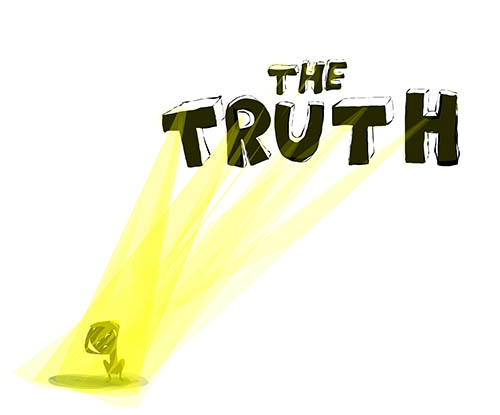I stared at a tattered childhood Christmas picture. It was the living room of my grandparent’s old house in Atlanta. Wrapping paper covered the floor, my aunts and uncles were still young, and my grandparents were still alive. I took in every detail, hoping the picture would be the catalyst that would allow me to mine forgotten memories. I began to remember little things: the smell of the house, the pattern of the linoleum, the weeping willow in the front yard, and eventually, a story emerged. The question is, are memories true? Can I verify that the events I mined and cobbled together are how things actually happened? Can anyone? If we can’t verify how the events occurred, how can we classify a memoir as nonfiction?
Nonfiction is generally considered anything that is not fiction. This includes reference books, travel books, cookbooks, self-help books, and narrative nonfiction (to name a few). Narrative nonfiction is often misunderstood, as it is fact that reads like fiction. It’s also called literary journalism, fact-based storytelling, and creative nonfiction. The word “creative” can be misleading as it implies storytelling, which is often misconstrued as fiction or historical fiction. Unlike an academic paper, reference book, or journalistic article, in a narrative nonfiction piece the research is seamlessly woven into the storyline. It tends to have characters, a plot, an arc, high stakes, compelling writing, and many other characteristics of fiction. However, a narrative nonfiction writer is not allowed to fill in the blanks with anything that isn’t true.
The two predominant forms of narrative nonfiction are the essay and the memoir. The essay is a conversational examination of a topic or idea and often incorporates research, experiential accounts, interviews, and anecdotes. The memoir is the story of a life, a section of a life, or an event. The memoir is usually written as one sweeping true story or a collection of true short stories. It is a factual account told in a story or narrative format.
If that’s the case, why does nonfiction allow something as unreliable as memories? The idea is that the writer is truly recounting the memory, not whether or not it actually occurred. The experience is born out of the memory of the event. A memoir is a recounting of memory. It has to be a truthful recounting of only what is remembered and what is researched.
While the autobiography offers an encompassing picture of the subject’s life, the memoir offers a glimpse, or pieces, or a complete accounting of a certain part of a life. Trauma narratives such as Man’s Search for Meaning by Victor E. Frankl can shed a new light on atrocities. Travel narratives such as On the Road by Jack Kerouac and Travels with Charley by John Steinbeck can give the readers a snapshot of a place in time. Immersive writing such as Friday Night Lights by Buzz Bissinger is another form of narrative nonfiction where the author immerses themselves in a place for an extended period of time.
Historical fiction is often confused with narrative nonfiction. There is an ongoing debate as to where one ends and another begins. Historical fiction is a researched story based in facts, but the blanks are often filled in with a fictional account of what the character was thinking or feeling, made-up dialogue, and scenes that happened behind closed doors.
Gone with the Wind by Margaret Mitchell is a well-known example of historical fiction. It is based on a factual account of the civil war. However, Mitchell made up characters, scenes, dialogue, etc. The Immortal Life of Henrietta Lacks by Rebecca Skloot is an excellent example of narrative nonfiction. Skloot wrote an investigative and historical account of the He-La cell. She traced the cells back to their origin—a woman named Henrietta Lacks. Skloot expertly laid out a factual account based on nearly a decade of research, while seamlessly creating a compelling narrative.
From the beginning of time, people have written true stories. Whether they are documenting events, examining a topic, or remembering the lilt of their grandmother’s dialect, narrative nonfiction allows writers to creatively craft the truth of their experience.

